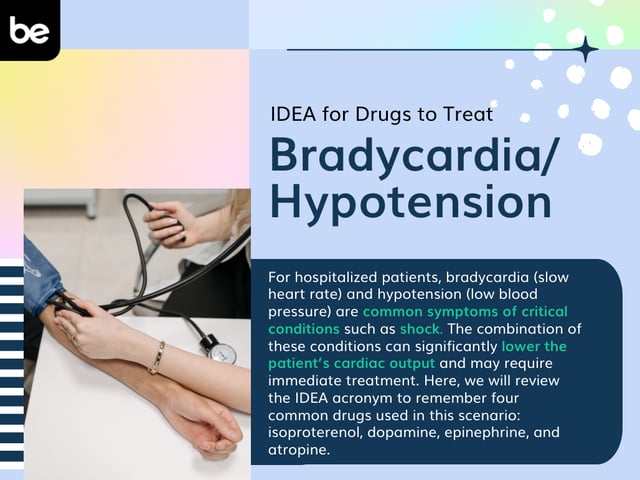
Electrolyte Relationships: Sodium and Potassium
Once you understand the functions and normal values for electrolytes, it is important to understand how some electrolyte levels are related to others. Often, an imbalance of one electrolyte is related to an imbalance of another electrolyte so understanding these relationships can assist in determining the root cause of, and treatment for, certain electrolyte imbalances. In this series, we will examine some of the how levels of sodium, potassium, calcium, and magnesium are related to other electrolytes. This post will focus on sodium and potassium.
You can find discussions about other electrolyte relationships in two other blogs:
The Relationship between Sodium and Potassium
Sodium is the primary cation in the body’s extracellular fluids, including blood and interstitial fluid, while potassium is the predominant cation within the body’s cells (intracellular). The cell membranes incorporate a sodium-potassium pump that plays a vital role in maintaining the balance of sodium and potassium both inside and outside of cells.
While it is generally perceived that sodium and potassium have an inverse relationship in the body, meaning that an increase in sodium levels could lead to a decrease in potassium levels and vice versa, the actual interplay between these two electrolytes is more complex.
The Role of the Kidneys
The kidneys function as the primary regulators in maintaining systemic sodium and potassium balance. Beyond their role in filtration, the kidneys intricately adjust the excretion and reabsorption rates of these ions, guided by a complex network of hormonal signals, including aldosterone, to preserve homeostasis.
As mentioned earlier, this regulation does not operate on a simple inverse relationship where an increase in sodium automatically triggers a decrease in potassium levels, or vice versa. Rather, the kidneys modulate the concentrations of these electrolytes independently, responding to the body’s specific needs. For example, a high dietary intake of potassium can prompt the kidneys to excrete more potassium without directly influencing sodium excretion.
Beyond the Kidneys: The Dietary Connection
The recommendation for people with high sodium levels to eat more foods high in potassium goes beyond just the idea of increasing sodium removal by the kidneys. This dietary strategy takes advantage of the wider health benefits of potassium, especially its ability to help regulate blood vessel function and body fluid levels, which can play a significant role in controlling blood pressure. Eating more potassium can help balance out sodium in the body and reduce the negative effects of too much sodium, like high blood pressure. Additionally, diets that are high in potassium are linked to a lower risk of stroke and heart-related issues, highlighting the key role of diet in managing electrolyte levels and overall heart health.
Understanding Magnesium’s Role in Cellular Health
Magnesium, while not as frequently discussed as potassium, holds a significant place as the second most plentiful cation inside cells. It plays a crucial role in maintaining cellular and overall health. A deficiency in magnesium can often be linked to or worsen a deficiency in potassium, as these two electrolytes are closely interconnected in their functions within the body. When magnesium levels in the body drop, it often leads to a corresponding decrease in potassium levels, a condition known as secondary potassium depletion. It’s important to note, however, that this relationship is not reciprocal; a decrease in potassium does not necessarily lead to a decrease in magnesium.
The Interplay Between Magnesium and Potassium
The relationship between magnesium and potassium is particularly evident when looking at cellular processes. Magnesium is vital for the proper functioning of the cell membrane and the enzymes that regulate potassium balance within the cell. When magnesium levels are low, these functions are impaired, leading to an increased movement of potassium out of the cells and into the bloodstream, where it can be filtered out by the kidneys. This process ultimately reduces the overall potassium levels in the body, a condition known as hypokalemia.
Managing Hypokalemia with Magnesium
Patients who are at risk for hypokalemia, such as those taking diuretics, should be monitored closely for their magnesium levels. Diuretics, while effective in treating certain conditions, can often lead to an increased excretion of both potassium and magnesium. In treating hypokalemia, it’s not sufficient to only replace potassium; addressing magnesium deficiency is equally important. Administering magnesium can help in restoring the balance of potassium in the cells and is often a necessary step in the effective treatment of hypokalemia. This approach underscores the necessity of considering the broader electrolyte balance in the body, rather than focusing on a single element, for optimal patient care.
Final Thoughts
In summary, a thorough understanding of the relationships among key electrolytes like sodium, potassium, and magnesium is crucial for healthcare professionals, especially those preparing for the NCLEX-RN. The dynamic balance between sodium and potassium is vital for essential bodily functions such as nerve signaling and heart rhythm, with the kidneys playing a central role in maintaining this balance through complex regulatory mechanisms. Additionally, the influence of dietary choices on this balance, particularly the role of potassium in countering high sodium levels and its broader cardiovascular benefits, highlights the importance of nutrition in managing electrolyte levels.
Furthermore, the interplay between magnesium and potassium underscores the complexity of electrolyte management in clinical practice. Recognizing how magnesium deficiency can impact potassium levels is critical, particularly in treating conditions like hypokalemia. This holistic understanding of electrolyte interactions is not only key for academic success but also for practical, informed decision-making in patient care, forming an essential component of effective nursing practice.
Keep Reading

National Council Licensure Examination-Registered Nurse Blog
What to Expect in Nursing School Clinicals
The clinical experience is a rite of passage for all nursing students, …

National Council Licensure Examination-Registered Nurse Blog
What is the NCLEX Next Generation (NGN) Exam?
If you’re interested in becoming a registered nurse, you likely know th…

National Council Licensure Examination-Registered Nurse Blog
IDEA for Drugs to Treat Bradycardia/Hypotension
For hospitalized patients, bradycardia (slow heart rate) and hypotensio…